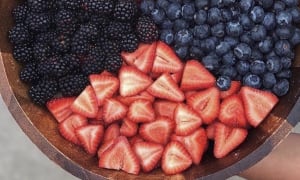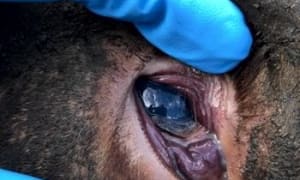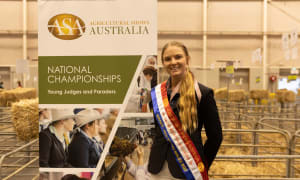ALL ruminants – but particularly cattle and sheep – are susceptible to nitrate/nitrite poisoning with the peak prevalence being in late autumn or early winter, especially when a flush of feed occurs after a dry summer with the autumn break.
Nitrate levels can build up in plants when nitrate is taken up from the soil faster than the plant can metabolise it to protein.
If ruminants consume enough of these high nitrate plants, the rumen (which is normally pretty good at dealing with nitrates through the metabolism to nitrite, then ammonia and finally microbial protein) can be overwhelmed and nitrite starts to accumulate in the animal.
Nitrite has the ability to bind to haemoglobin (the molecule that carries oxygen in the blood) forming met–haemoglobin which cannot carry oxygen, hence the affected animal effectively suffocates.
Several key animal and plant factors increase the risk of nitrate/nitrite poisoning including stressed or hungry stock, stressed plants, immature plants (particularly some forage crops), high levels of nitrogen fertiliser use and environmental conditions that reduce the rate of photosynthesis such as cloudy days, sudden cold conditions or moisture stress.
Latest Stories
Clinical signs of nitrate/nitrite poisoning include staggering, muscle tremors, rapid breathing or panting, cyanotic (blue) or chocolate coloured mucous membranes (figure 1), recumbency and rapid death.
Large numbers of livestock can be affected in an outbreak situation which commonly occurs within an hour or so of being introduced to the toxic pasture or crop.
Many pasture species, weeds and forage crops have caused nitrate/nitrite poisoning in the past.
The common species involved include (but are not limited to) capeweed, forage oats or barley, rape and even newly sown ryegrasses.
High nitrate crops cut for hay can remain toxic for many months.
The classic situations where poisoning occurs include introduction of hungry stock to a paddock with a heavy growth of capeweed (especially if it has recently been sprayed) or the sudden introduction of hungry stock to short or waterlogged forage crops such as barley or oats; particularly on a cloudy or overcast morning.
If you suspect an outbreak of nitrate/nitrite poisoning it is important to seek veterinary advice immediately as there is an effective antidote available.
Make sure you let your vet know the approximate number of animals potentially affected.
Quietly remove any stock from the paddock if they can walk and get them to a stock yard or similar if at all possible as many individual animals often need treating.
Although prompt treatment is usually lifesaving, abortions commonly occur during the next week or so in pregnant animals.
Relapses are uncommon but can occur after treatment, so close monitoring of affected stock for the next 24 hours is also important.
Pastures and crops can be tested for nitrate concentration as the risk of toxicity increases with increasing nitrate levels.
Different labs report results in different units but plants with a Nitrate–N of less than 500 – 1000 parts per million (ppm) are generally safe to feed to livestock with plants with Nitrate–N concentrations above 4000 ppm being unsafe to feed under any circumstances.
More specific guidelines exist for feeding to pregnant animals and for inclusion rates of moderate Nitrate–N feeds.
Horses are rarely affected by nitrate/nitrite poisoning as they are not very good at metabolising nitrate to nitrite.
However, they are very susceptible to nitrite poisoning and this can occur with exposure to high nitrite water, nitrite fertilisers or wet high nitrate hay where bacteria have managed to convert the nitrate to nitrite.
Occasionally high nitrate feeds can cause gut irritation resulting in diarrhoea or colic.
If you are worried about the potential for nitrate/nitrite poisoning, contact your vet or agronomist for further advice on testing and safe feeding of potentially high nitrate pastures or crops.














